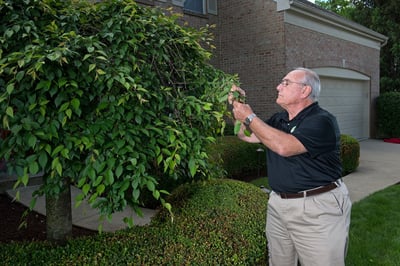 Got tree problems? If you have one or more trees on your property that have symptoms, then you may be worried that your tree isn’t going to make it. Considering the fact that your trees are more than just a monetary investment—but also add value in the form of shade, privacy, and beauty—the last thing that you want is to have to remove and replace them.
Got tree problems? If you have one or more trees on your property that have symptoms, then you may be worried that your tree isn’t going to make it. Considering the fact that your trees are more than just a monetary investment—but also add value in the form of shade, privacy, and beauty—the last thing that you want is to have to remove and replace them.
The truth is, most people don’t worry about their trees until something is visually wrong. Unfortunately, once something is wrong enough to show visual symptoms, it can already be an issue of multiple compounding factors.
For instance, what may have started as an environmental concern such as drought stress on your trees, may now be compounded (and complicated) by a disease or pest that has also taken hold.
Whether it’s one or more issues at hand, your next step is figuring out is my tree sick? And if so, why is it sick and what is the solution?
In order to get you started, we’ve rounded up questions to begin to diagnose tree problems at your Cincinnati, Dayton, OH, or Northern Kentucky home. A tree diagnosis takes quite a bit of sleuthing and it all begins with being able to answer these questions properly.
1. What Kind of Tree is It?
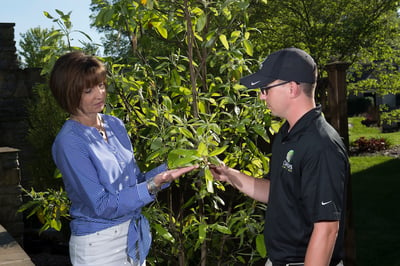 In order to determine what’s wrong with your tree, you first need to know what kind of tree it is. This is important information as tree problems will affect various tree species differently. You can’t possibly know “what is normal for this tree” if you don’t know what kind of tree it is.
In order to determine what’s wrong with your tree, you first need to know what kind of tree it is. This is important information as tree problems will affect various tree species differently. You can’t possibly know “what is normal for this tree” if you don’t know what kind of tree it is.
2. Was The Tree Planted Properly?
The installation of your tree can make a world of difference in its overall performance. Different species have different requirements in terms of planting depth, location, zone, and even proximity to other plants. If it was not planted properly in the first place, this could be the cause behind your tree problems.
Unfortunately, if that’s the case, all of the remedies you keep throwing at it are never going to fully solve the problem. You may just be wasting your money on trying to fix a tree that will never be completely healthy due to the way it was planted. Though it’s not what most people want to hear, if this is truly your problem, it may be best to start over with a tree that’s planted properly.
3. Are There Common Problems With the Tree Species?
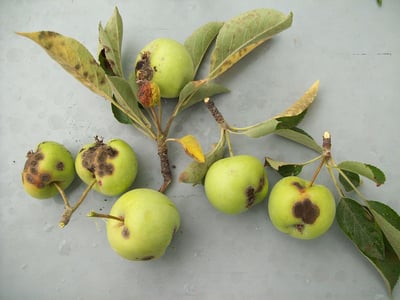 A great tree diagnosis tool involves the knowledge of what’s commonly wrong with this particular tree species. A lot of tree problems are highly predictable to a tree care professional.
A great tree diagnosis tool involves the knowledge of what’s commonly wrong with this particular tree species. A lot of tree problems are highly predictable to a tree care professional.
If you mention the tree species to a pro who knows their plants, they’ll be able to tell you some of its most common problems. For example, Arborvitae are prone to bagworms whereas Crabapples are prone to the disease Apple Scab.
4. What Sick Tree Symptoms Are You Seeing?
There are many signs of a sick tree and it’s important to note the specific ones that you’re seeing, which have you worried. While this is an incomplete list, here are some that you may have noticed:
- Sticky substances
- Stippled or deformed leaves
- Discolored lesions
- Discolored foliage
- Blisters or scabby spots
- Stem dieback
- Root rot
- Thinning canopy
- Overall plant decline
5. When did the Symptoms First Appear?
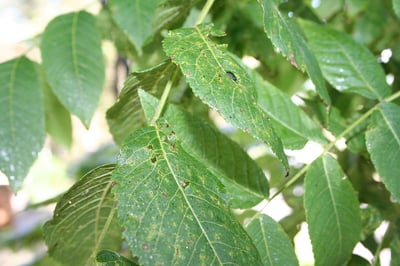 Are these symptoms new or have they been ongoing? If it’s the latter, how long do you suspect this problem has been occurring? The answers to those two questions are vital in the process of a proper tree diagnosis. A tree doesn’t get sick overnight. But the trouble is, you may have not noticed problems until they were severe.
Are these symptoms new or have they been ongoing? If it’s the latter, how long do you suspect this problem has been occurring? The answers to those two questions are vital in the process of a proper tree diagnosis. A tree doesn’t get sick overnight. But the trouble is, you may have not noticed problems until they were severe.
Even if it feels like your tree got sick overnight, if you think back, you might be able to recall noticing a change in your tree that dates farther back. Perhaps you can recall the tree failing to perform the way it normally does during a particular season.
Any information that you can provide on the timeline of the symptoms can be helpful. It’s not uncommon for tree problems to have been occurring for years before they’re fully recognized.
6. Are You Seeing These Symptoms on Other Trees & Plants?
The condition of the surrounding plants is also important. This can provide important information about contributing environmental factors. If different species are all being impacted with the same symptoms, it may not be a specific pest or disease that’s the problem since most of these issues have limited host ranges. Different species suffering from the same symptoms may be due to an environmental concern.
7. What are the Potential Environmental Factors at Play?
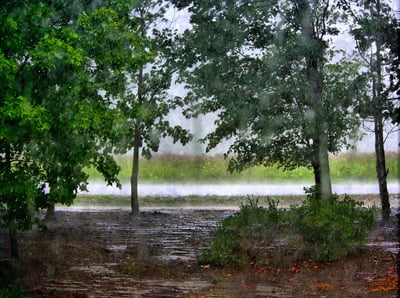 If you suspect an environmental concern, what are the environmental conditions like? What is the wind/air like? Exposure to wind can cause desiccation (drying) of leaf tissue. How much water is available to your tree? When a tree isn’t receiving enough water, it can absolutely decline.
If you suspect an environmental concern, what are the environmental conditions like? What is the wind/air like? Exposure to wind can cause desiccation (drying) of leaf tissue. How much water is available to your tree? When a tree isn’t receiving enough water, it can absolutely decline.
On the flipside, if a tree is being flooded with water (perhaps because it’s planted in a drainage area), its roots can be drowned. What about the possibility of soil pollution? For instance, if you’re constantly draining a pool right into an area of trees, chlorine can absolutely cause tree problems. There’s a lot to consider.
8. Has There Been Possible Tree Damage?
Sometimes tree problems are the result of damage. This could be anything from construction damage to the faulty use of chemicals or even improper pruning.
It’s important to think about any accidental damage that may have occurred and to make record of it. Attempting to repair damage is different than treating disease, pests, or environmental concerns.
9. Has Anything Been Done So Far to Address This Tree Problem?
If you’ve attempted any DIY tree care to address your tree problems, it’s important to be forthcoming with this information. It is possible to make an existing problem worse—particularly if you’ve come to an incorrect tree diagnosis.
For instance, if you suspect that your tree is drought-stressed but it actually has a fungal disease, you could exacerbate the problem by watering it.
10. Have you Consulted With a Tree Care Professional?
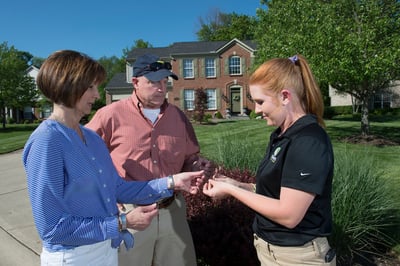 Talking to a professional about your tree problems is the best way to get a proper tree diagnosis—and a proper diagnosis is the key to a successful solution. Of course, it’s important that you choose to work with a tree care professional that truly knows their stuff.
Talking to a professional about your tree problems is the best way to get a proper tree diagnosis—and a proper diagnosis is the key to a successful solution. Of course, it’s important that you choose to work with a tree care professional that truly knows their stuff.
Not every company out there knows a lot about tree identification and proper diagnosis. It can be complicated and some of the lawn care companies offering tree services really don’t know the difference from one issue to another. They may just apply the same treatments and solutions to all trees, rather than taking a customized approach.
Instead, make the choice to work with a tree care company like Oasis Turf & Tree that will take the time to go through questions like these with you and come to a proper tree diagnosis. By doing so, you can feel confident that your concerns will be properly addressed and you’ll be on your way to getting the answers—and solutions—you’re looking for.
If you want to find out more about tree and shrub health care for your Cincinnati, Dayton, OH, or Northern Kentucky home, call us today at 513-697-9090 to get your quote, let us help you choose a stand-alone program or bundle it with other services, and then sit back and relax knowing your trees are in good hands.
Image sources: apple scab, thousand cankers disease
